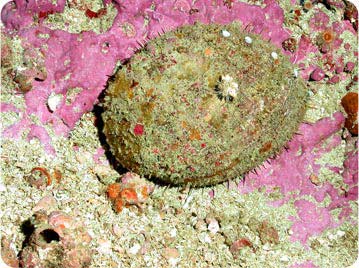Abalone is popular all around the Pacific Rim, from Santiago to Tokyo. It’s expensive, though, because abalone populations have plummeted in the last few decades, mainly because of overfishing.
 White abalone. Credit: National Oceanic and Atmospheric Administration
White abalone. Credit: National Oceanic and Atmospheric AdministrationThe abalone is a type of sea snail. It has a tough spiral shell that’s shaped a little like an ear. It moves around on a large muscle known as a “foot” that sticks out of the bottom of the shell. Tentacles around the foot poke around for food or signs of predators. A full-grown abalone is a few inches across, and some can live for several decades.
But while individual abalone can live long lives, many species are in trouble. Off the West Coast of the United States, for example, abalone became a big commercial business in the 1970s, with annual takes of up to a couple of million pounds off California alone.
But by the 1990s, the rate had dropped to near zero, and some species began receiving official protection. In 2001, the white abalone was listed as “endangered.”
The problem is that the remaining abalone aren’t making enough little abalone to overcome the loss.
Abalone reproduction is an inefficient process. They deposit eggs and sperm in the water -- a process that requires a whole lot of abalone crowded close together to have much success. But there aren’t many abalone left, so they’re too spread out for this process to work.
The white abalone could be on the road to extinction, with other species facing tough prospects, too. So a delicacy that’s rare and expensive today could disappear entirely.

